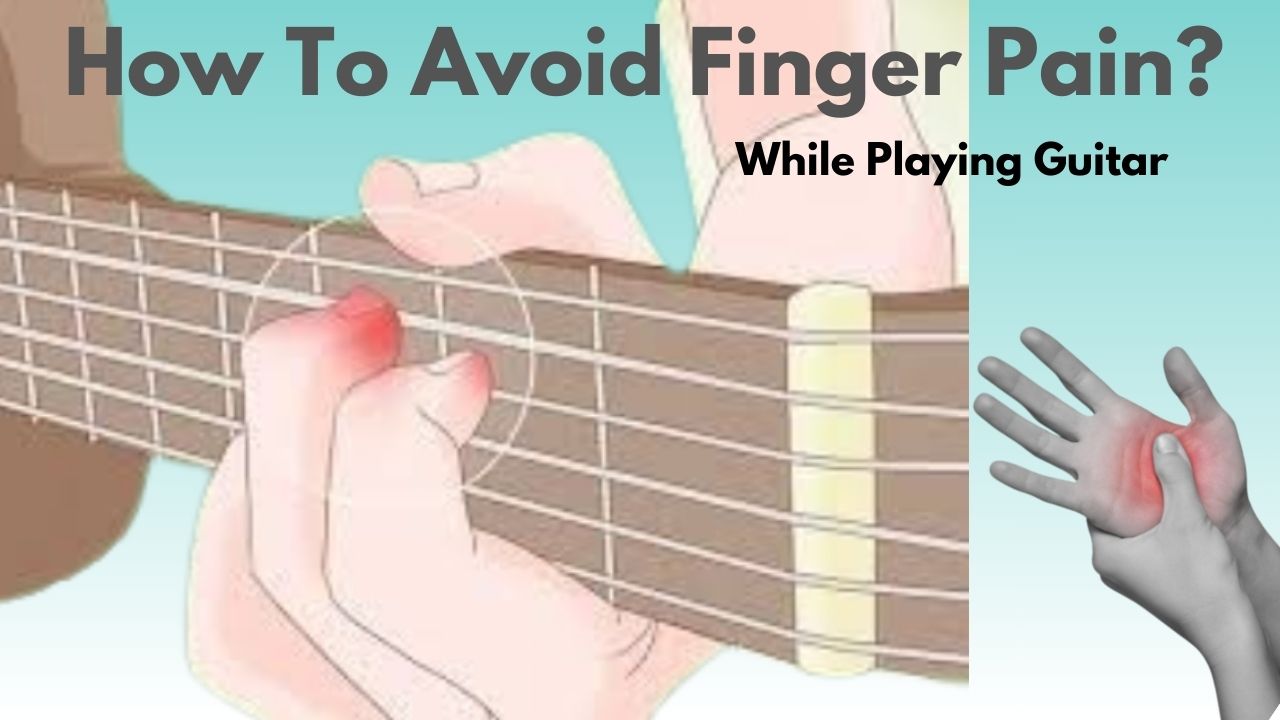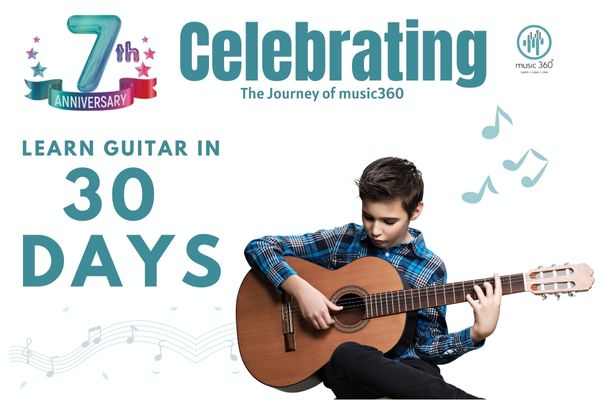Table of contents
- Introduction-Finger pain from guitar
- Before we try to solve this one, let us first find out why finger pain is experienced.
- Stages of finger pain novice to advanced
- Advice and methods for guitar practice without finger pain
- Solving finger pain and playing with confidence
- Conclusion learning the guitar stress-free
Introduction-Finger pain from guitar
So, are you a novice guitarist or maybe a seasoned pro? Then you may probably have gone through some finger pain while learning or practicing guitar. It could be sore fingertips, aching joints, or stiffness. Finger pain is a general common annoying problem for guitarists. But do not worry-you are not alone, and this pain does not have to prevent you from playing music. In this simple-to-follow guide, we will discuss why finger pain arises, how to limit and avoid such pain, and helpful no-stress practice techniques. Let us take a detailed dive into this problem and simple solutions that will allow you to play pain-free.
Before we try to solve this one, let us first find out why finger pain is experienced.
Why do your fingers hurt while playing guitar? When you begin playing guitar, your fingers hit the strings. To get a clear sound, your fingers must press these down hard. It is hard on the body, especially for beginners whose fingers are not used to such pressure. After a while, your fingers will gain strength, but that can hurt at first. There are a few reasons for finger pain:
- Not Avid to Finger Strength: When you begin playing the guitar, your fingers are not accustomed to pushing down on strings. This can cause soreness from new job muscles and tendons getting accustomed to their work.
- Poor Posture or Technique: Poor technique and improper posture can result in some extra tension on your hands and fingers that enhance discomfort.
- Too much repetition: Continuous playing, without resting the muscles, could make them overstretched, become too tired, and even painful.
- Too much pressure: Putting an excess amount of force to press the strings would strain and hurt your fingers. Most beginners commit this mistake as they believe that more pressure would yield a better sound.
Stages of Finger Pain Novice to Advanced
A beginner guitarist, when practicing at first, may be very strong with agony. However, after many repetitions of the practice sessions, agony becomes less painful. That is because of greater skin thickness on the fingertip and due to the acclimatization of finger muscles when pressed against the strings. However, with improvement in playing, pains in joints or tendinitis or pain in the wrist or forearm will begin to appear. These types of aches generally happen due to bad technique at practicing and over-practising, thus paying lesser attention to your hands.
Beginners: You may have slight aching and sensitivity in the fingertips.
Intermediate Players: When you play tougher chords and scale patterns you might feel tiredness in fingers, wrists, or even in your forearms.
Advanced players: These players, after years of practice, may develop tendinitis or carpal tunnel syndrome if they do not take necessary precautions when practicing or handling their hands.
Advice and Methods for Guitar Practice Without Finger Pain
Finger pain can be relieved in a variety of ways when playing the guitar. Here are some suggestions and techniques to help you practice without overstretching your fingers.
1.Warm-Up and Stretching
Like all the physical exercises, just the mere act of warming up the fingers and hands can reduce tension and even prevent injury. Stretching improves blood flow that keeps your fingers softer and more flexible, which means less pain.
- Finger Stretches: Stretch the fingers. Now, gently draw the fingers back with the other hand and keep them there for ten seconds.
- Hand Exercises: Open and close your hands several times to stretch the muscles and tendons in your palms and wrists.
- Wrist Exercises: To warm up your joints and muscles, make quick circles with your wrists to the right and left.
2.Gradual approach
The most common cause of finger ache is overdoing things too fast, particularly for beginners. You very easily get elated and go overboard when you really want to play. However, do not be in a hurry to practice.
- Start developing a habit of practicing for short periods of time-15 to 20 minutes-and you can gradually increase the duration as your fingers and hands begin to get used to the movement.
- Practice technique, not tempo. Do not simply play through songs like you are racing over them-slowly and deliberately create the right muscle memory for you. This will decrease your likelihood of damaging your fingers.
3. Employ Good Technique
How you sit with your fingers, your wrists, even your body as you play your guitar has a lot to do with the stress on your hands and your fingers. Good technique is crucial in eliminating finger pain.
- Finger positioning: What you would want to do is place your fingers on the strings just behind the frets, but not necessarily at the top of the fret. If you do so, you might only need minimal pressure, yet you would still obtain a clear sound.
- Soft touch: It is forbidden to hold the neck of a guitar very tight. To hold the guitar’s neck softly, keep your hands relaxed. Your fingers may ache, and your hand can be permanently damaged with pressure.
- Straight wrist: Do not bend your wrist in abnormal angles. A bent wrist means extra pressure on your forearm and fingers.
4.Take rest and breaks.
Rest is also crucial even when you want to just practice. Muscles can get tiring and swollen if you keep on playing long without resting. It usually hurts to hold forth for long periods of time.
- Use the Pomodoro Technique: practice for 25 minutes then take a 5-minute break. When you have four 25-minute practice sessions, take a 20–30-minute break. That lets your muscles recover so they do not get too tired.
- Do not play too long without resting, even as an early step. Gradually increase your practice time as you build strength.
5. Use Lighter Gauge Strings
The type of strings you mount on your guitar can really be a lifesaver or make a huge difference in how hard you must push down on them. Generally, it is easier to play with lighter gauge strings because they exert less pressure and bend easier, which lowers finger stress.
- You might need to use more light or light strings if this is the first time you are practicing. You can switch to stronger strings when you feel you get to an acceptable level of performance.
6. Check Your Guitar Setup
If you find it consistently hurts, then you might be setting up your guitar wrongly. A misaligned guitar can become tedious to play because you must press down the strings harder on your fingers.
- Make sure your guitar is in tune and the action on your guitar is not too high. This is hard to press down on when action is too high. Painful: Hurts to press down on strings.
- Professional setup: Well worth a professional setup on your guitar. These setup charges are not very high but pay big dividends in ease of comfort and playing.
7. Physical Development of the Fingers
As you train, the finger muscles will be strong. However, with exercises, it will happen sooner. Playing will therefore become easy and comfortable.
- Spider exercise. Place your fingers along the fretboard in chromatic order: 1st fret, 2nd fret, 3rd fret, etc. and start to move one finger at a time across the strings. It will make your fingers develop strong and independent.
- Finger push-ups: Place your fingers against the fretboard and push down on the fretboard without the aid of your thumb. Hold it for 10 seconds then let go.
8. Hydrate and Care for Your Hands
As with any other muscles in your body, your fingers and hands need water and care to function at optimal levels.
- Drink plenty of water during practice time to keep your muscles and tendons working at best.
- Use hand cream to avoid drying out and cracking the skin on your fingertips, especially when you play frequently.
Solving Finger Pain and Playing with Confidence
With these tips in your practice routine, finger pain will significantly lessen, and you will be able to gain the muscle strength and skill to play easily. After a while you would get the feeling that your fingers grew stronger, your playing improves, and you would be able to play for more considerable times with no pain.
Patience is, after all, a virtue. Pain in the fingers is part of the learning process but also a challenge that can be met and combated through smart practice and self-care.
Conclusion Learning the Guitar Stress-Free
Not one of us likes pain while engaging in one activity we like doing. Players of guitars experience pain more intensely than others, but if you adhere to the guidelines in this e-book, which include warming up, stretching, adjusting your guitar’s settings, and taking rests, you can reduce your discomfort and avoid issues completely. As you practice, you’ll develop stronger fingers and greater control, which will make playing the guitar much more fun.
Even if your fingers hurt right now, keep trying.
You will quickly discover that playing the guitar is far more enjoyable and less stressful if you have patience, practice often, and concentrate on comfort.
Call to Action: Learn to Play Guitar Confident, Stress Free and Easy with Music360. Sign up for your courses today and find your musical beginning with expert help and personalized tips that will place you at a catapulting improvement level without the stress.
https://learn.music360world.com/courses/Guitar-7-days-Free-Trial-Course-6718f5d73fff7d2ece0d2774


